Look, I’ll be honest with you—most companies treat case studies like an afterthought. They slap together some screenshots, throw in a few numbers, and call it a day. But here’s what I’ve learned after years of doing this: when you actually put effort into your case studies, they become absolute game-changers.
With over 238,000 customers using HubSpot CRM across 135+ countries, there’s no shortage of success stories floating around. The problem? Most of them are boring as hell and don’t actually help anyone make a decision. I’m talking about turning your customer wins into something that actually moves the needle for your business.
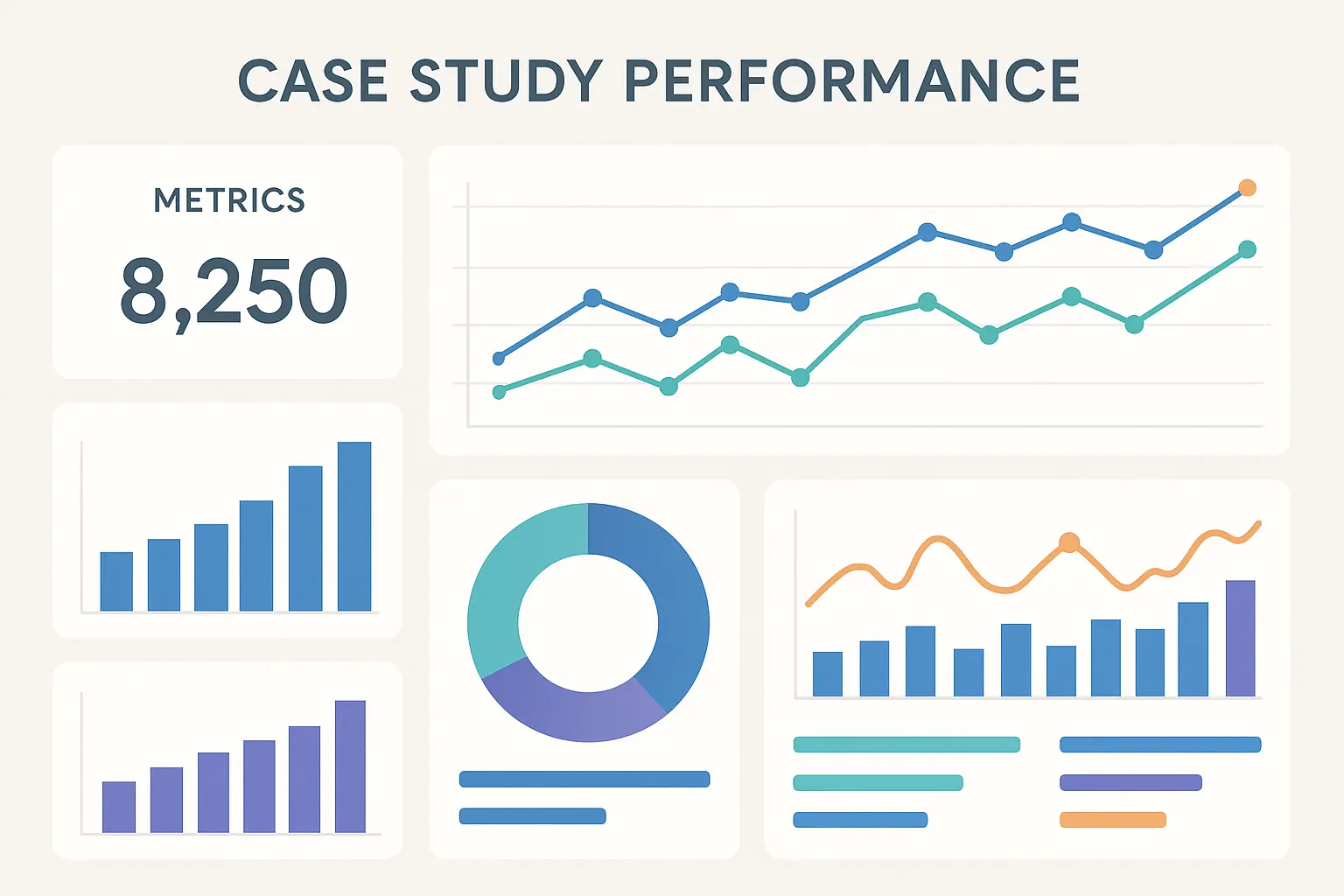
Table of Contents
-
Understanding HubSpot Case Study Fundamentals
-
HubSpot Case Study Creation and Optimization
-
Advanced Case Study Applications and Analysis
-
Strategic Implementation for Marketing Agencies
-
HubSpot Case Study Distribution and Amplification
-
Measuring Case Study Performance and ROI
-
Industry-Specific HubSpot Case Study Applications
TL;DR
-
Case studies aren’t just nice-to-have marketing fluff—they’re your secret weapon for proving ROI and building trust with prospects who’ve been burned before
-
The magic formula that actually works: clear problem + specific solution + real numbers + honest timeline = case study gold
-
Different industries need totally different approaches—B2B focuses on relationship building while e-commerce is all about that customer lifecycle
-
Don’t let your case studies collect digital dust—weave them into sales conversations, email sequences, and social media like your business depends on it (because it does)
-
Track everything that matters: who’s actually reading this stuff, which ones generate leads, and what revenue you can tie back to them
-
Here’s the kicker—use case studies strategically to spot market gaps and figure out who your real ideal customers are
Understanding HubSpot Case Study Fundamentals
Case studies are way more than just “look how awesome we are” stories. They’re social proof on steroids and give prospects a roadmap for what success actually looks like with your approach. The thing is, most people have no clue how to create ones that actually work.
I was digging through some research the other day and found that about 3 out of 4 companies using HubSpot actually see their revenue go up. Pretty solid odds, right? Source: 6Minded HubSpot Marketing Statistics But here’s the catch—just because the results are there doesn’t mean your case studies are telling that story in a way that makes people want to buy.
The Anatomy of Case Studies That Actually Work
I’ve read through hundreds of case studies over the years, and the ones that actually get results follow a pattern you can’t ignore. You can’t just throw together some screenshots and call it a day (trust me, I tried that approach early on and it was a disaster).
The best case studies tell a story that makes your prospects think, “Holy crap, that’s exactly what I’m dealing with right now.” They start with a problem that hits so close to home, your reader gets a little uncomfortable.
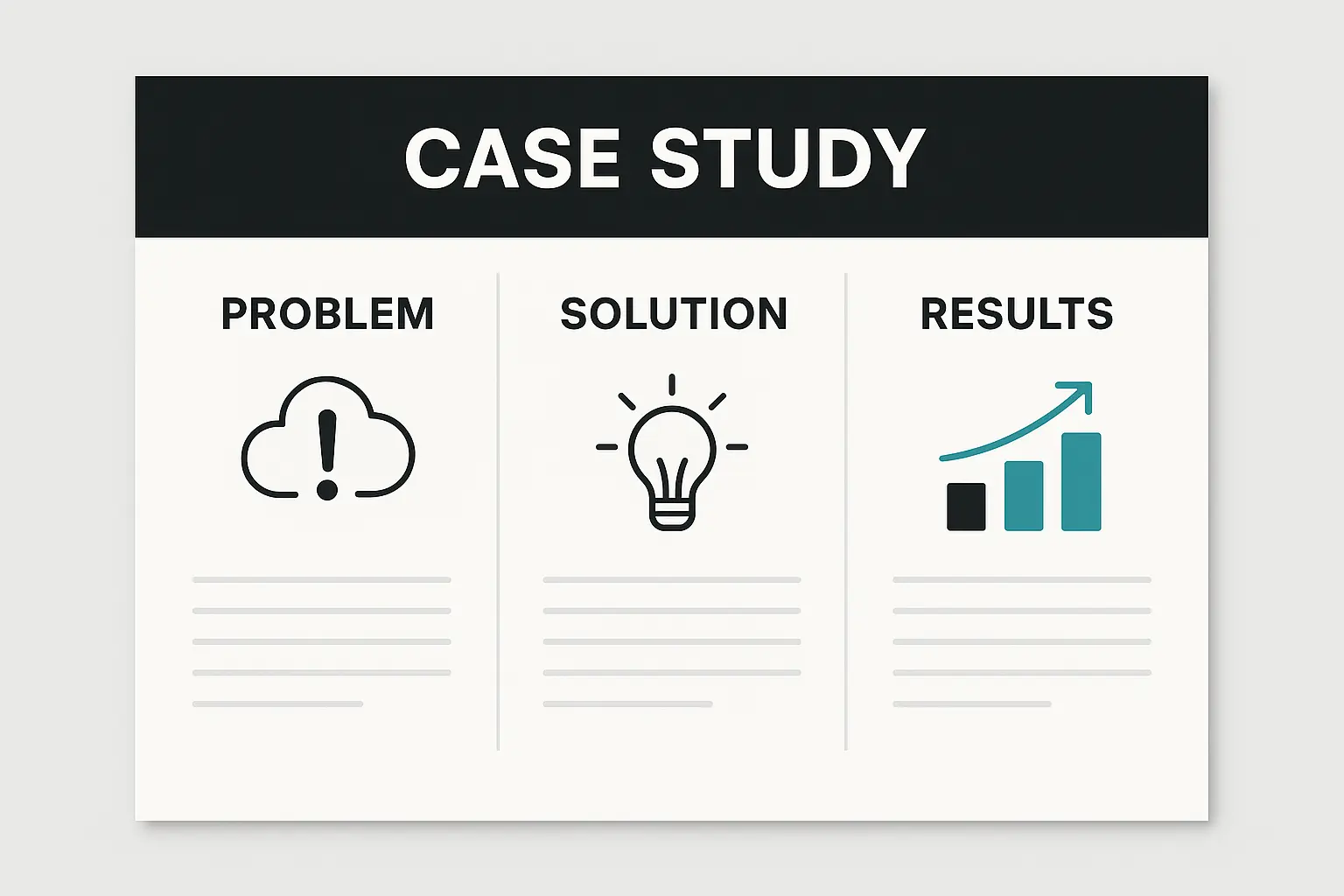
How to Write Problems That Actually Matter
Your problem statement needs to punch people in the gut. Instead of saying “Company X needed better marketing” (yawn), try something like “Company X was burning $15,000 every single month on leads that went absolutely nowhere, and their sales team was spending 60% of their time chasing ghosts.”
See the difference? The second version makes me immediately think about my own marketing budget and whether I’m throwing money down the drain.
The solution section is where most people screw up royally. They turn it into a HubSpot feature list that reads like a software manual. Nobody cares that you used “advanced lead scoring capabilities.” I want to know exactly which tools they used, how they set them up, and why they made those specific choices. Did they start with email automation or focus on lead scoring first? These details matter because they help me understand the actual strategy, not just the tools.
Take Datanyze, for example. They were juggling separate platforms for business development, lead generation, and email marketing—basically doing everything three times and having no idea what was working. After they got their act together with HubSpot’s integrated approach, they could finally see where leads were coming from and guide prospects through a journey that actually made sense. The result? A 5X increase in leads and 23% lead-to-customer conversion rate. Now that’s a story worth telling.
The Numbers That Actually Matter
Numbers don’t lie, but they can definitely mislead if you’re not careful. I’ve seen case studies claiming “500% increase in leads” without mentioning they went from 2 leads to 10 leads per month. That’s technically accurate but completely useless for anyone trying to make a real business decision.
Here’s what I actually care about when I’m evaluating results:
-
What did leads cost before and after?
-
How many people actually became customers at each stage?
-
How long did deals take to close?
-
Did customers stick around longer and spend more?
-
How many hours per week did the team get back?
And for the love of all that’s holy, give me timeframes. A 200% improvement over 6 months tells a completely different story than the same improvement over 2 years.
When I’m working with clients, I often pull out our ROI calculator to show them what realistic returns look like before we even start talking HubSpot implementation.
|
What We’re Measuring |
Before HubSpot |
After HubSpot |
Improvement |
How Long It Took |
|---|---|---|---|---|
|
Monthly Leads |
50 |
250 |
400% |
6 months |
|
Cost Per Lead |
$150 |
$60 |
60% reduction |
6 months |
|
Lead-to-Customer Rate |
8% |
23% |
187% increase |
6 months |
|
Sales Cycle Length |
45 days |
28 days |
38% reduction |
3 months |
|
Team Hours Saved |
0 |
20/week |
N/A |
Ongoing |
The Messy Middle Part Nobody Talks About
Most case studies skip the part where things get messy—the actual work of getting from problem to solution. I want to know how long it took to see the first signs of life, when they hit major milestones, and what went wrong along the way (because something always goes wrong).
A realistic timeline looks more like this:
-
Week 1-2: Platform setup and trying to migrate data without breaking everything
-
Week 3-4: Team training and creating campaigns that don’t suck
-
Month 2: First round of “this isn’t working” panic and optimization
-
Month 3: Things start clicking and lead quality improves
-
Month 6: Full “holy crap, this is actually working” realization
This kind of honesty helps me set proper expectations with my team and avoid the “why isn’t this working yet?” conversations in week three.
What Successful Companies Actually Do
After reviewing dozens of case studies, I’ve noticed patterns that you can’t ignore. Companies that absolutely crush it with HubSpot approach implementation in similar ways, regardless of whether they’re selling software or sandwiches.
Why Industry Matters More Than You Think
B2B service companies usually start with lead scoring and email automation because their sales cycles are longer than a Netflix series. They need to nurture prospects over months, not minutes.
E-commerce businesses? They jump straight into behavioral triggers and abandoned cart sequences. Their customers make decisions fast, so the automation needs to move at internet speed.
SaaS companies focus on onboarding sequences and keeping people from canceling. They’re playing a completely different game where keeping customers happy drives growth more than finding new ones.
Understanding these patterns saved me from making the mistake of copying tactics that work great for one industry but fail miserably in another. (Been there, done that, got the confused client phone calls.)
Research shows that 82% of marketers say HubSpot Marketing Hub boosted their lead generation, but the specific strategies that drive these results are totally different depending on what business you’re in. Source: 6Minded HubSpot Marketing Statistics
The Smart Way to Scale Up
The companies that get the most value from HubSpot don’t try to use every single feature on day one. That’s like trying to learn guitar by playing a Hendrix solo—you’re just going to frustrate yourself.
They start simple and add complexity as their team gets comfortable:
-
Month 1-3: Basic email marketing and keeping track of contacts
-
Month 4-6: Lead scoring and simple automation that actually works
-
Month 7-12: Getting fancy with segmentation and personalization
-
Year 2+: Custom reporting, integrations, and all the advanced stuff
Companies that try to skip steps usually end up overwhelmed and using about 10% of what they’re paying for.

How to Actually Research and Verify Your Case Studies
Creating case studies that people actually believe requires more than just asking your happiest customer to share their story. You need a system, or you’ll end up with case studies that sound made up.
Getting the Real Story
I always start with the HubSpot reporting dashboard to pull actual performance metrics. Screenshots of real dashboards carry way more weight than someone’s best guess about what happened.
The interview process needs to involve multiple people from the customer’s team—not just the person who championed buying your service. I want to hear from the marketing manager who uses the platform every day, the sales rep who sees whether lead quality actually improved, and the executive who cares about ROI.
Here’s why this matters: If the marketing team says lead quality improved 300% but the sales team doesn’t mention any change in their close rates, something doesn’t add up. Cross-referencing helps you catch these inconsistencies before they make it into your case study.
HubSpot Case Study Creation and Optimization
Building case studies that actually convert takes more than good intentions and a Word document. I learned this the hard way after creating dozens of case studies that looked pretty but generated exactly zero leads. It was like throwing a party and having nobody show up.
The key is treating case study creation like any other marketing campaign—with clear objectives, target audiences, and ways to measure whether it’s actually working.
HubSpot’s recent launch of its Smart CRM platform has been a game-changer for case study creation by “unifying customer data, teams, and apps within a single ecosystem” CX Today. Now it’s way easier to gather all the performance data you need from different touchpoints to build compelling case studies.
Tools and Resources That Actually Help
Picking the Right Template (And Making It Your Own)
HubSpot’s template library gives you a decent starting point, but don’t just grab the first template that looks professional. Different formats work better for different audiences and where you’re planning to use them.
For sales teams, I go with one-page summaries that have big, bold numbers and minimal text. Sales reps aren’t going to read through three pages of background information when they’re on a call with a prospect who’s already losing interest.
For website visitors who are still in research mode, longer case studies with detailed implementation steps work better. These people want to understand the “how” behind the results because they’re trying to figure out if they can replicate it.
Video case studies work incredibly well for social media, but they require more production resources. I usually create the written version first, then decide if the story is compelling enough to justify the extra work and budget.
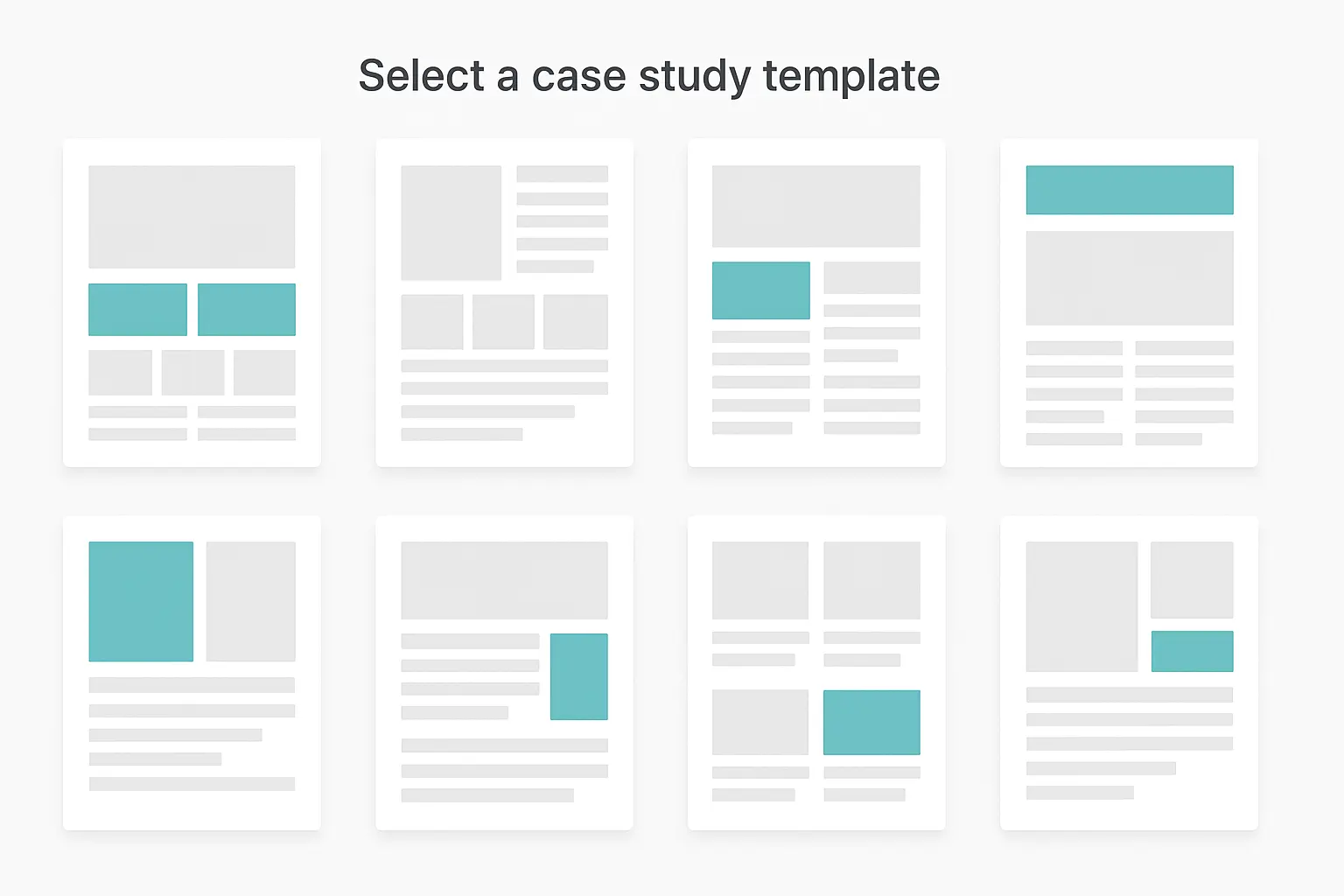
Keeping Track of Everything (Before It Becomes a Nightmare)
Keeping track of case study versions becomes a complete nightmare without proper organization. Trust me on this one—I’ve spent way too many hours trying to find the “final final FINAL version” of a case study.
I use HubSpot’s file manager with a naming convention that actually makes sense: “CaseStudy_CompanyName_Industry_Version_Date.pdf”
Setting up approval workflows prevents embarrassing mistakes. Nothing kills credibility faster than publishing a case study with outdated metrics or getting the client’s company name wrong (yes, that happened to me once, and no, I don’t want to talk about it).
I also create different versions for different places:
-
Full PDF for website downloads
-
One-page summary for sales presentations
-
Social media graphics with the key stats
-
Email-friendly HTML versions for newsletters
Each version serves a specific purpose, but they all tell the same core story.
Actually Tracking Whether This Stuff Works
Most people create case studies and then completely forget to track their performance. That’s like running ads without looking at the results—you have no idea if you’re wasting your time and money.
Here’s what I track:
-
How many people download them and where they come from
-
How long people actually spend reading (for web-based case studies)
-
Social shares and engagement
-
Which case studies generate leads
-
How often the sales team actually uses them
-
How often the sales team actually uses them
HubSpot’s attribution reporting helps me connect case study interactions to actual deals. When I can show that prospects who downloaded specific case studies are 40% more likely to close, suddenly everyone cares about case study quality.
To track performance effectively, I recommend using our marketing ROI calculator to measure the direct impact of case study content on revenue generation.
Making Sure People Can Actually Find Your Case Studies
Case studies can rank surprisingly well in search results if you optimize them properly. People search for stuff like “[industry] HubSpot results” or “[company size] marketing automation success” all the time.
I include relevant keywords in:
-
Case study titles and headings
-
Meta descriptions and image alt text
-
File names and URL structures
-
Links from other related content
There’s this nerdy SEO thing called schema markup that basically tells Google “Hey, this is a case study!” It’s not as complicated as it sounds, and it can help your stuff show up better in search results.
Making Case Studies Part of Your Bigger Strategy
Using Case Studies to Nurture Leads (The Smart Way)
I don’t send the same case study to someone who just downloaded a beginner’s guide and someone who’s requesting a demo. Context matters, and sending the wrong case study can actually hurt more than help.
Early-stage prospects need case studies that focus on problem identification and initial results. They’re still figuring out if they have a problem worth solving, so don’t overwhelm them with implementation details.
Mid-stage prospects want the detailed implementation stories. They’re comparing solutions and need to understand what success actually looks like with your approach.
Late-stage prospects need case studies that address their specific concerns. If they’re worried about implementation time, show them a case study about quick wins. If they’re concerned about ROI, focus on the financial results.
With HubSpot Marketing customers seeing a 134% increase in their website traffic on average, case studies that highlight these traffic improvements can be particularly effective for businesses struggling with online visibility. Source: 6Minded HubSpot Marketing Statistics
Training Your Sales Team to Actually Use These Things
Sales teams need more than just access to case studies—they need training on how to use them strategically. Otherwise, they’ll just sit in a folder somewhere collecting digital dust.
I create a simple guide showing which case studies work best for different situations:
-
Industry match
-
Company size similarity
-
Specific pain points addressed
-
Common objection scenarios
Role-playing exercises help sales reps practice weaving case studies into conversations naturally. Nobody wants to hear “Here’s a case study” as a response to every question. That’s not selling—that’s just being annoying.
The best sales reps use case studies to tell stories, not present data. They’ll say something like, “That reminds me of another client who had the exact same concern…” and then share relevant details from a case study. It feels natural and helpful instead of pushy.
Advanced Case Study Applications and Analysis
Once you’ve got the basics down, you can start using case studies for way more sophisticated purposes. I’ve discovered that case studies are basically a goldmine of strategic intelligence that most companies completely ignore. It’s like having a treasure map and using it as a coaster.
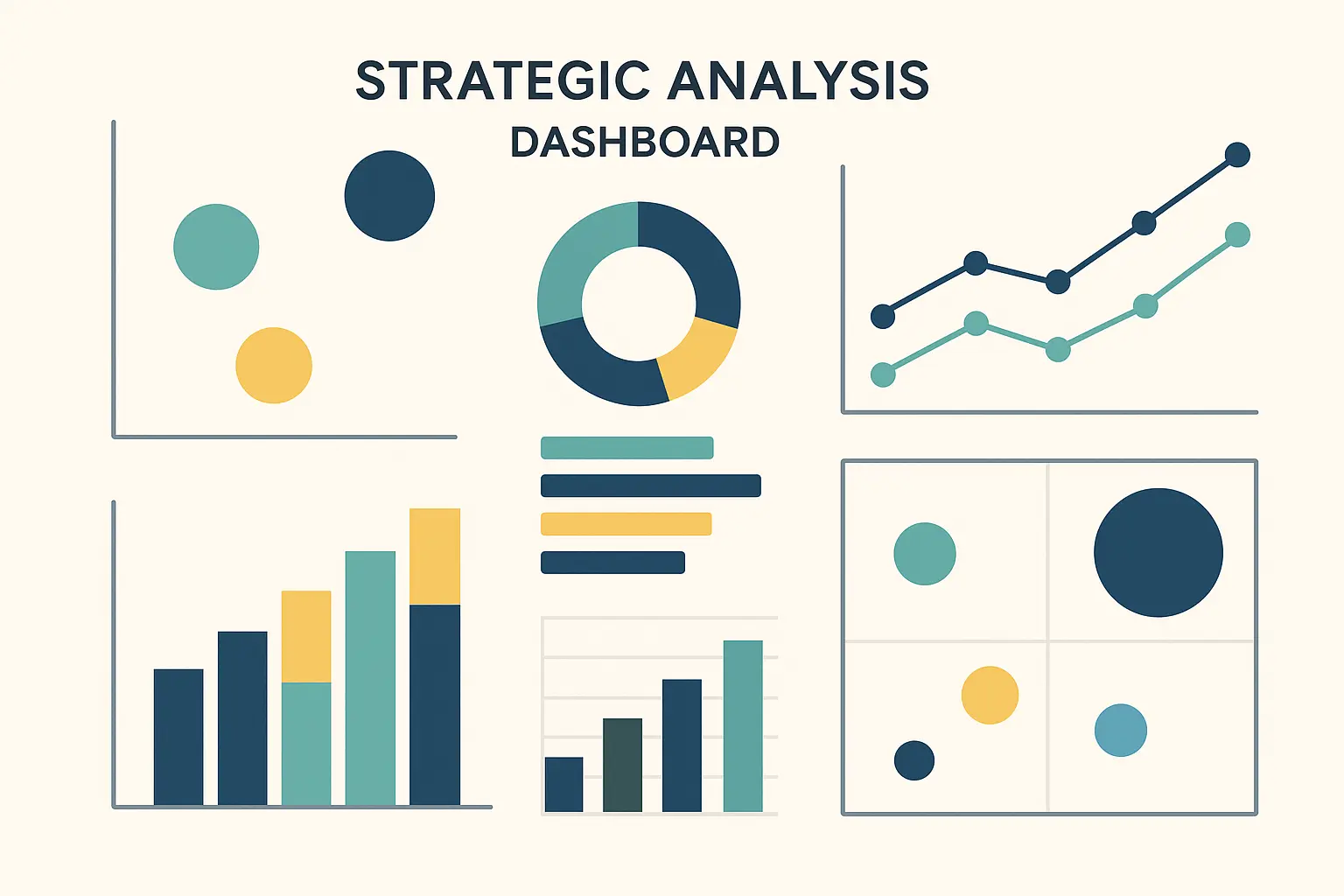
Spying on Your Competition (Legally)
Finding Market Gaps Nobody Else Sees
I spend time every quarter reading competitor case studies, not to copy their approach (that’s just lazy), but to find the gaps they’re completely missing.
If every agency in my space is showcasing e-commerce success stories, but I notice zero professional services case studies, that tells me something important about positioning opportunities. Sometimes the absence of case studies in certain industries indicates underserved markets, not lack of demand.
Setting Realistic Benchmarks (Not Fantasy Numbers)
Collecting performance metrics from multiple case studies helps me establish realistic benchmarks for different industries and company sizes. This is way more valuable than just throwing around industry averages that may or may not apply to your situation.
When I can tell a prospect that the average improvement in their industry is 150% lead increase, but my clients typically see 200%+, that’s a powerful positioning statement backed by actual data instead of wishful thinking.
Understanding Your Customer Journey Through Case Studies
Building Better Buyer Personas
Case studies reveal details about your ideal customers that surveys and interviews often miss completely. The stories people tell about their challenges and decision-making processes are incredibly revealing if you know what to listen for.
I’ve completely rewritten buyer personas based on patterns I noticed across multiple case studies. For example, I discovered that our most successful clients typically tried 2-3 other solutions before finding us, which totally changed how we position ourselves in the market.
Higher Logic’s transformation is a perfect example of this. When they brought in a new CMO, they discovered their marketing was basically just blast emails (ouch). By analyzing their audience’s behavior and implementing HubSpot’s progressive profiling forms, they could develop better contact profiles and customize content based on specific personas and pain points. The result? Way better lead conversion rates.
Handling Objections Before They Come Up
Every case study contains objection-handling gold if you know where to look. The concerns that customers mention having before implementation become the objections your sales team needs to address proactively.
I create objection-handling scripts based on how successful customers describe overcoming their initial hesitations. When a prospect says they’re worried about implementation complexity, I can share how another client had the same concern and what they discovered during the process.
Finding Success Patterns You Can Repeat
Successful case studies reveal repeatable processes that can be systematized and applied to similar client situations. This is where case studies become less about marketing and more about operational intelligence.
I’ve identified specific implementation sequences that consistently produce better results for certain types of businesses. These patterns become part of our standard methodology rather than happy accidents we stumble into.
Strategic Implementation for Marketing Agencies
Getting Clients to Actually Participate
Making Client Collaboration Less Painful
Getting client approval for case studies requires more finesse than most agencies realize. You’re basically asking clients to share potentially sensitive business information for your marketing benefit. If you approach this wrong, you’ll get a hard no every time.
I’ve found that clients are way more willing to participate when they see clear value for themselves—like positioning them as industry leaders or showcasing their innovative approach. Make it about them, not about you.
The approval process needs to be streamlined but thorough. I use a standard agreement that outlines exactly what information will be shared, how the client will be positioned, and what approval rights they keep throughout the process.
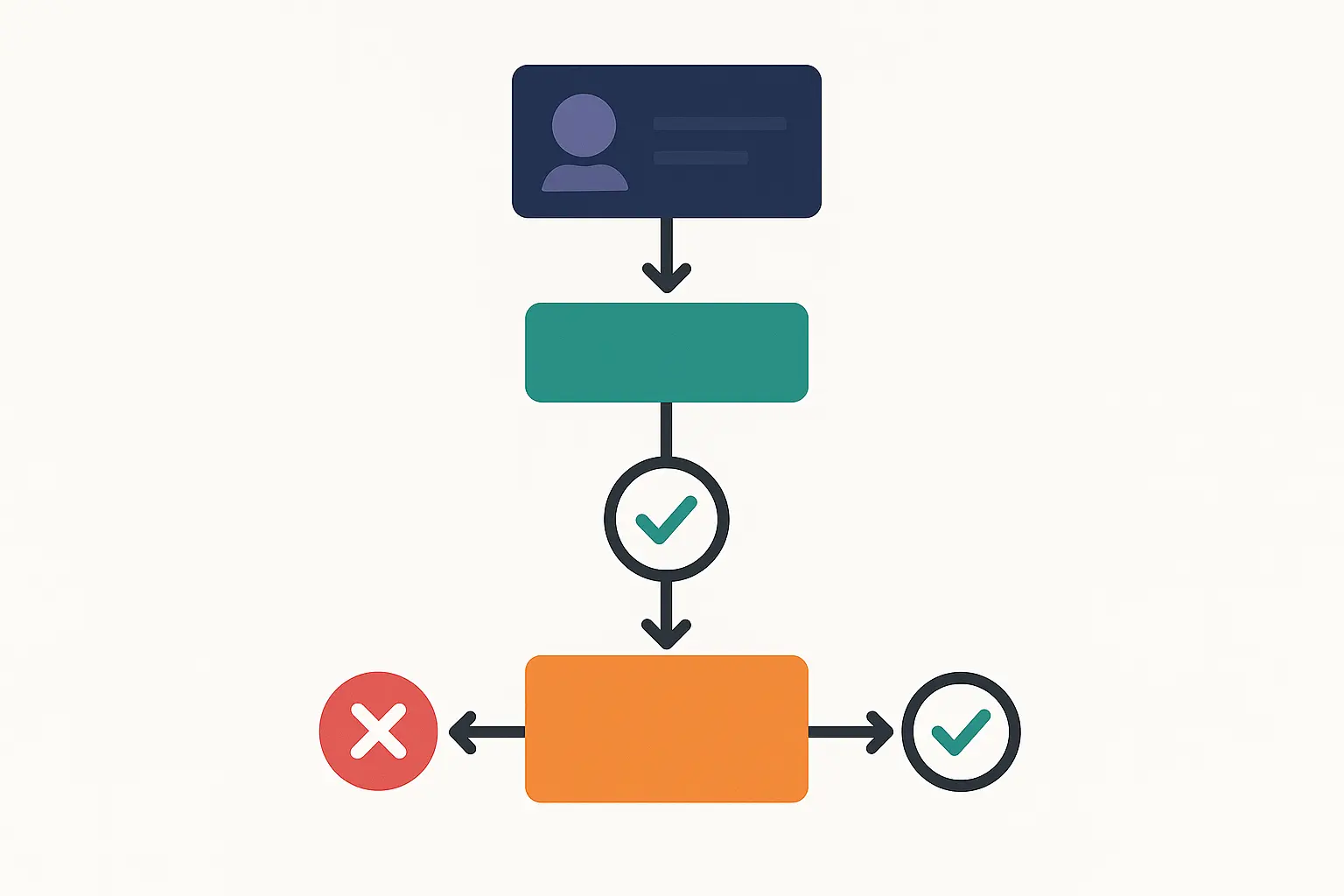
|
Case Study Phase |
What The Client Does |
What We Handle |
Timeline |
|---|---|---|---|
|
Initial Planning |
Say yes and set expectations |
Define goals and scope |
Week 1 |
|
Data Gathering |
Give us access and metrics |
Analyze all the performance data |
Week 2-3 |
|
Interview Process |
Key people talk to us |
Conduct and record sessions |
Week 3-4 |
|
Content Creation |
Review our drafts |
Write and design everything |
Week 4-6 |
|
Final Approval |
Sign off on final version |
Make their changes |
Week 6-7 |
|
Launch & Promotion |
Share on their channels |
Distribute everywhere |
Ongoing |
HubSpot Case Study Distribution and Amplification
Getting your case studies in front of the right people requires way more strategy than just posting them on your website and hoping for the best. You need a coordinated approach across multiple channels, or your amazing case studies will just sit there looking pretty and generating zero leads.
With HubSpot’s recent introduction of “generative AI agents covering the CX bases for customers, along with new workspaces where service, sales and marketing teams can collaborate with AI assistance” TechTarget, case study distribution can now be enhanced through AI-powered content creation and cross-departmental collaboration tools. (Pretty cool stuff, honestly.)
Getting Your Case Studies Everywhere They Need to Be
Website Integration That Actually Makes Sense
Case studies shouldn’t live in isolation on some “Case Studies” page that nobody visits. I learned this the hard way when I realized our beautifully crafted case studies were getting about as much traffic as a ghost town.
Service pages need relevant case studies that demonstrate results for that specific service. Pricing pages benefit from ROI-focused case studies that justify the investment. Even blog posts can reference case study insights to add credibility to advice and recommendations.
The key is making case studies discoverable when people are actively looking for proof that your approach works, not when they’re just browsing around.
Social Media That Doesn’t Suck
Social media requires breaking case studies into bite-sized pieces rather than sharing full PDFs that nobody will read on their phone.
LinkedIn posts featuring key statistics from case studies consistently outperform generic advice posts. People want to see real results, not theoretical best practices that may or may not work in the real world.
Instagram Stories work well for behind-the-scenes content about the case study creation process or quick stat highlights with engaging visuals.
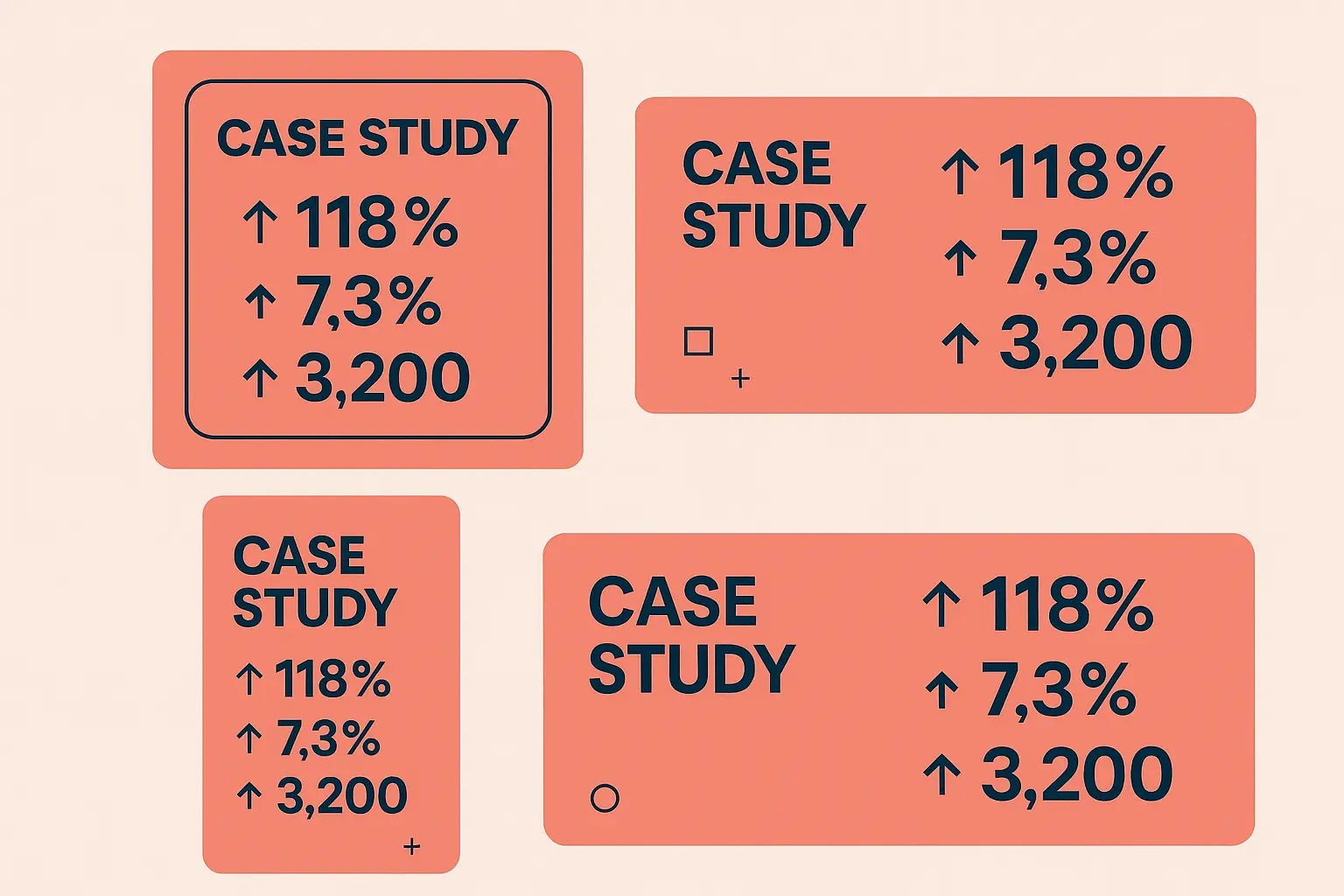
Email Marketing That People Actually Open
Email newsletters provide perfect opportunities to share case study insights without being overly promotional. I focus on the lessons learned rather than just bragging about the results achieved.
Automated email sequences can deliver relevant case studies based on subscriber behavior and interests. Someone who downloads a PPC guide should get case studies showcasing PPC success stories, not general marketing wins.
When developing email sequences, I often reference our HubSpot FAQs to provide balanced perspectives alongside success stories.
Training Your Sales Team to Use Case Studies Strategically
Helping Reps Pick the Right Story
Sales reps need quick reference guides showing which case studies work best for different situations. I create simple decision trees that help them choose the most relevant story for each prospect conversation without having to read through every single case study.
The selection criteria include industry match, company size, specific challenges addressed, and timeline expectations. A startup looking for quick wins needs totally different case studies than an enterprise company planning a long-term transformation.
Storytelling That Doesn’t Sound Robotic
The best sales reps don’t present case studies—they tell stories that happen to include case study details. There’s a huge difference between these approaches.
Instead of saying “Here’s a case study about a client who increased leads by 200%,” they say “I worked with another company in your industry who was facing the exact same challenge. Here’s what happened when they tried our approach…”
The story format makes the information way more memorable and relatable while still delivering the same credibility-building data.
Measuring Case Study Performance and ROI
Tracking What Actually Matters
Going Beyond Basic Download Numbers
Basic download numbers don’t tell you anything useful. I track how people actually engage with case study content to understand what’s working and what’s putting people to sleep.
Heat mapping tools show which sections of case studies get the most attention. If people consistently stop reading after the problem statement, the solution section might be too complex, too boring, or just not relevant enough.
Time on page metrics help me distinguish between people who actually read the content and those who just downloaded it for later (and probably never looked at it again).
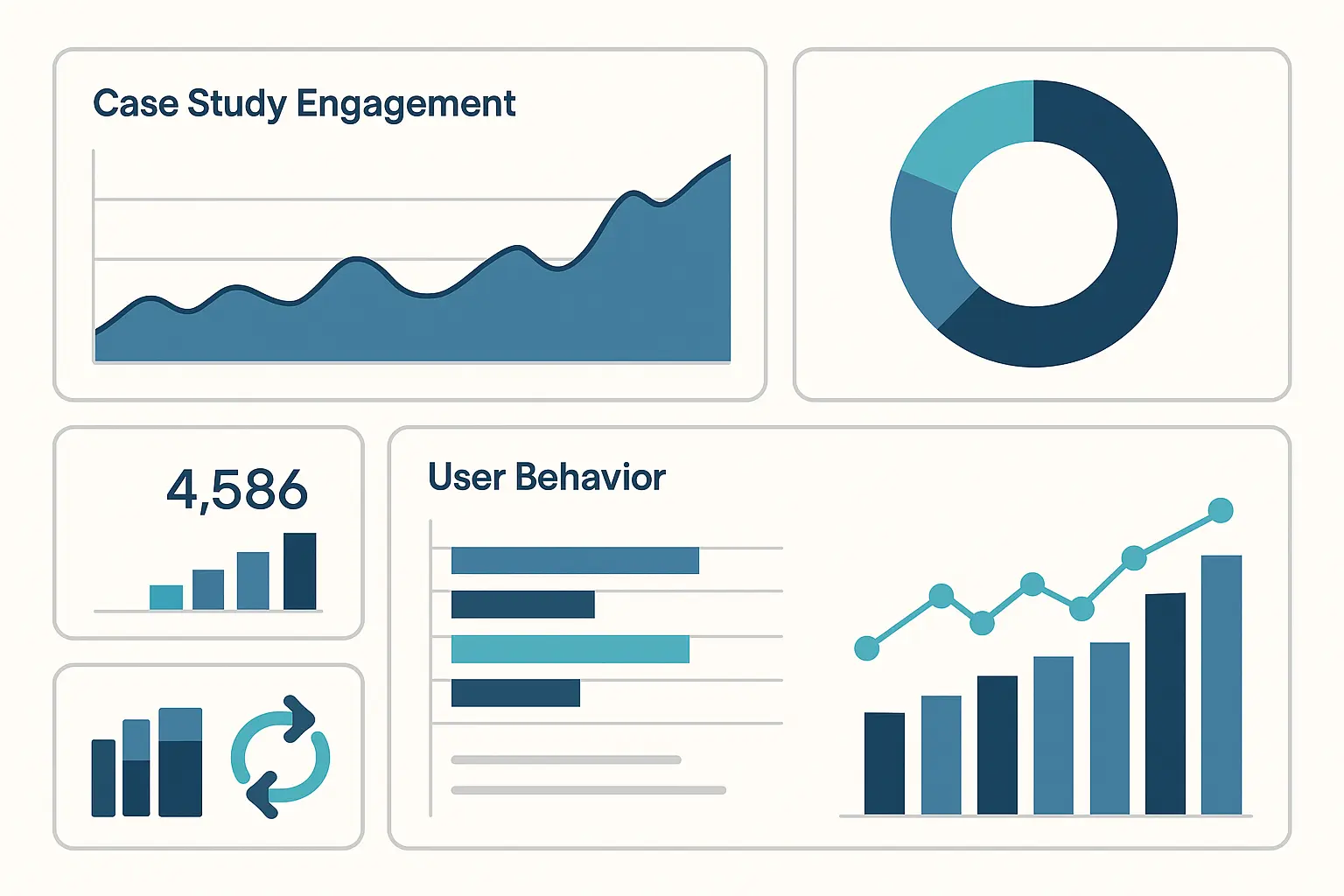
Connecting Case Studies to Actual Revenue
HubSpot’s attribution reporting helps me connect case study interactions to actual revenue, but it requires proper setup and consistent tracking. (Don’t worry, I’ll explain what that means.)
I track both direct attribution (leads generated immediately after case study downloads) and influenced attribution (prospects who engaged with case studies during their buyer journey but converted later).
The influenced attribution often shows higher impact because case studies typically support decision-making rather than generate initial interest.
For comprehensive performance tracking, I use our SEO ROI calculator to measure the long-term value of case study content in organic search results.
Proving Case Studies Actually Move the Needle
Proving case study ROI requires tracking metrics beyond basic engagement. Here’s what I actually measure:
-
How fast deals close for prospects who engaged with case studies
-
Close rates for case study-influenced opportunities
-
Average deal size differences
-
Sales cycle length variations
When I can show that prospects who read relevant case studies close 30% faster and at 15% higher deal values, the investment in case study creation becomes a no-brainer business decision.
Making Your Case Studies Better Over Time
Testing What Actually Works
I test everything from headlines to call-to-action placement to find what resonates best with our audience. Some of the results have been pretty surprising.
Recent tests revealed that case study titles focusing on specific metrics (“How Company X Reduced Cost-Per-Lead by 67%”) outperform generic titles (“Company X Success Story”) by 40% in click -through rates. Who knew being specific would work better than being vague? (Okay, we probably should have seen that coming.)
Format testing showed that our audience prefers shorter case studies with more visual elements over longer, text-heavy versions—even though the longer versions contain more detailed information.
A recent A/B test comparing two case study formats revealed that prospects spent 65% more time engaging with case studies that included interactive elements and visual timelines versus traditional text-based formats. The interactive version also generated 23% more qualified leads, demonstrating that sometimes it’s worth investing in fancier formats.
Industry-Specific HubSpot Case Study Applications
B2B Service Companies Have Different Needs
B2B service companies care about totally different metrics than e-commerce or SaaS businesses. They want to see improvements in lead quality, not just quantity, because their sales process involves significant human interaction and longer relationship-building phases.
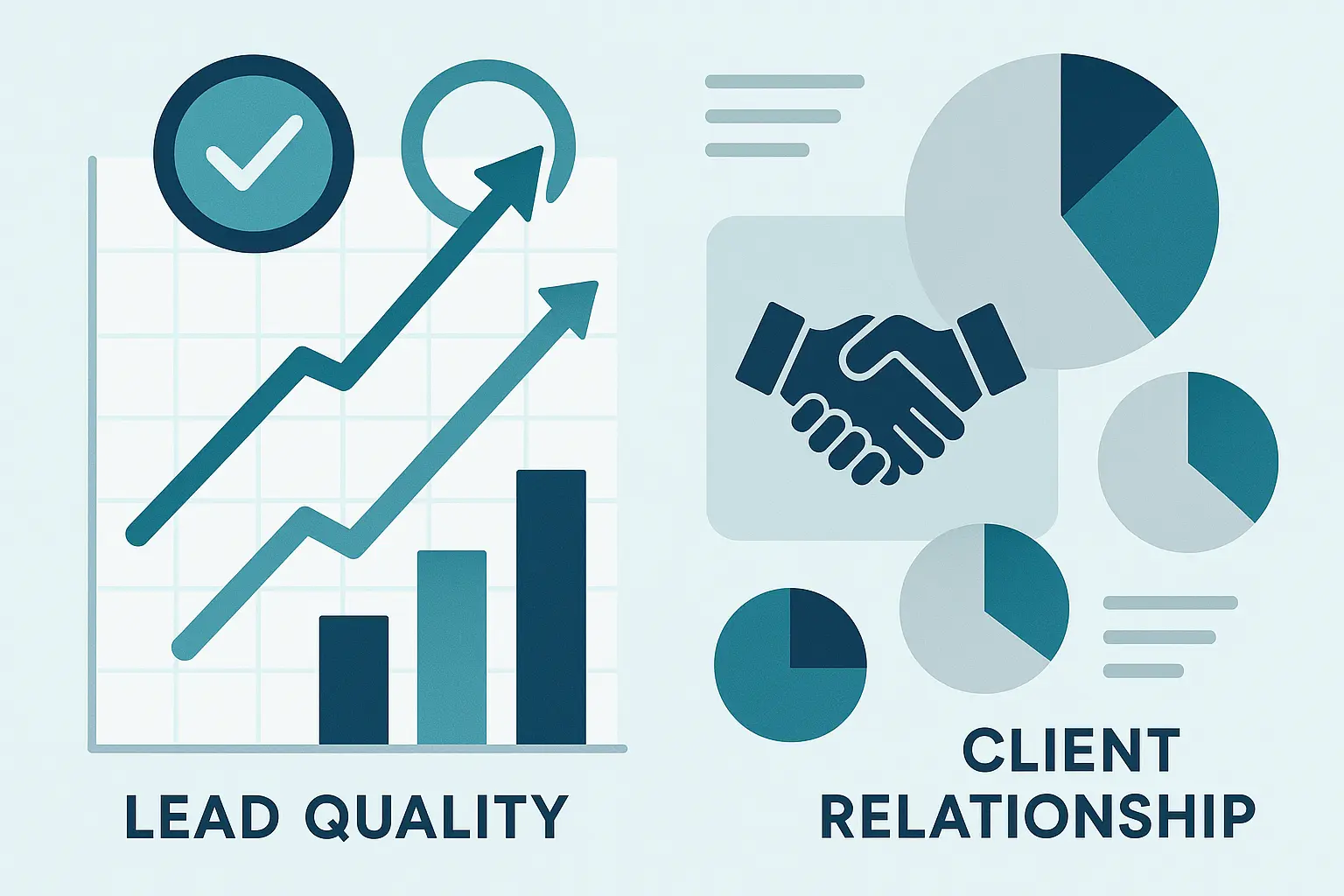
Professional Services Need Special Treatment
Law firms and consulting agencies need case studies that show how HubSpot helps them nurture relationships over months or years, not drive immediate purchases. Their clients don’t impulse-buy legal services.
I focus on metrics like:
-
Referral tracking and attribution
-
Client retention and repeat engagement rates
-
Time saved on administrative tasks
-
Improved client communication and satisfaction scores
These businesses also care about compliance and confidentiality, so case studies need to be more carefully anonymized while still providing credible proof of results.
For professional service firms, I often recommend starting with our marketing budget calculator to establish realistic expectations before implementing HubSpot solutions.
Technology and SaaS Applications
SaaS companies have complex customer journeys that involve multiple stakeholders, free trials, and ongoing success management. Their case studies need to reflect this complexity instead of pretending it’s a simple linear process.
I highlight:
-
Multi-touch attribution across long sales cycles
-
Product-led growth integration with marketing automation
-
Customer success and expansion revenue tracking
-
Churn prediction and prevention workflows
The technical audience appreciates detailed implementation specifics and integration capabilities more than other industries. Don’t dumb it down too much.
E-commerce and Retail Case Studies
Customer Retention Is Everything
E-commerce case studies need to show the full customer lifecycle, not just the initial purchase conversion. One-and-done customers don’t build sustainable businesses.
I emphasize:
-
Post-purchase email sequences and customer onboarding
-
Behavioral triggers for cross-selling and upselling
-
Win-back campaigns for customers who’ve gone quiet
-
Loyalty program integration and management
The metrics that matter most include customer lifetime value, repeat purchase rates, and average order value improvements over time.
Seasonal businesses need case studies that show how HubSpot helps them maximize peak periods while maintaining engagement during slower seasons.
When working with e-commerce clients, I frequently reference our advanced analytics strategic growth guide to demonstrate how data-driven insights can transform their customer retention strategies.
Final Thoughts
Look, creating effective HubSpot case studies isn’t just about documenting success—it’s about building a systematic approach to proving your value and attracting the right clients. The difference between case studies that generate leads and those that collect digital dust comes down to strategic thinking and actually following through.
Your case studies should work as hard as any other marketing asset. They need clear objectives, target audiences, and ways to measure success. Most importantly, they need to tell stories that your prospects can see themselves in, with specific details that make the outcomes feel achievable rather than like some marketing fairy tale.
The businesses that master case study creation gain a serious competitive advantage. They can prove their claims with real data, address objections before they come up, and build trust with skeptical prospects who’ve been burned by vendors who overpromise and underdeliver.
Here’s the thing I’ve noticed after doing this for years—the companies that actually take case studies seriously? They’re the ones crushing it while their competitors are still wondering why nobody trusts them.
If you’re sitting there thinking “This all sounds great but I have no idea where to start,” I get it. The Marketing Agency has helped tons of companies figure this stuff out, and honestly, it’s way less overwhelming once you have someone to walk you through it. We specialize in developing data-driven marketing strategies that deliver measurable ROI, and we understand how to transform customer success stories into powerful lead generation tools that support your entire sales process.
Ready to turn your customer successes into your most effective marketing weapon? We can help you create case studies that actually convert prospects into clients.



